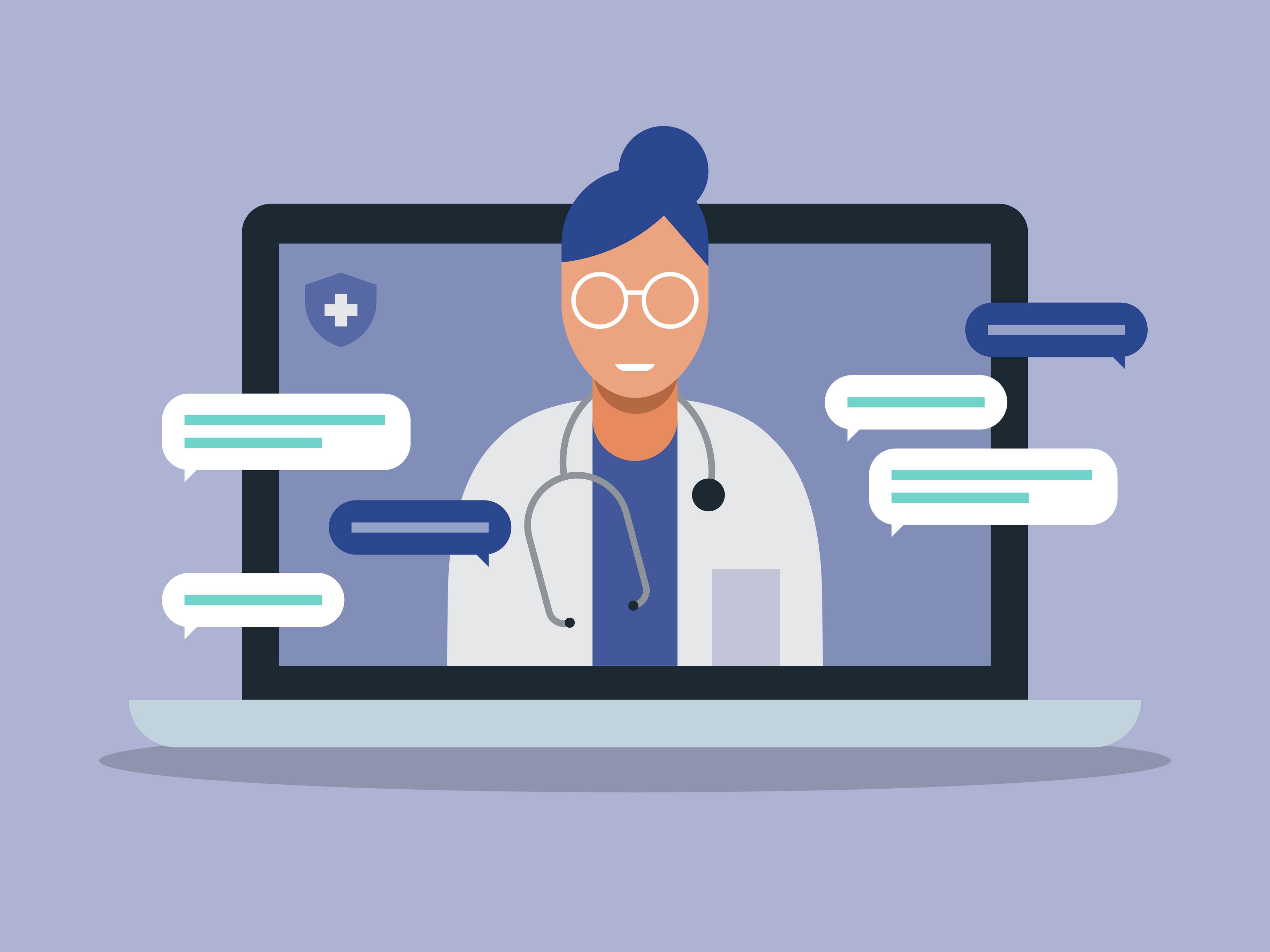4 Benefits of Digital Health in Addressing Musculoskeletal Conditions
How digital health solutions can help employers and health plans better manage chronic musculoskeletal issues.
- Hinge Health Learning Center
- Articles
- 4 Benefits of Digital Health in Addressing Musculoskeletal Conditions
Reviewed by our clinical and medical experts
Meghan Doherty
Meghan Doherty is the Senior Manager of Content Marketing at Hinge Health. She has 10+ years of experience creating and managing marketing and PR content for SaaS companies in the healthcare and HR technology spaces. Meghan lives in the Greater Boston area with her husband Brad and their Golden Retriever Mollie.
Imagine being able to take a proactive, evidence-based approach to musculoskeletal (MSK) pain while saving money, increasing engagement, and improving well-being. Digital health and at-home therapeutics to MSK conditions presents organizations with an easy-to-use, scalable, and affordable option for dealing with one of the nation’s most challenging and costly chronic health conditions.
Digital health, or digital healthcare, is a simple concept. By definition, digital health is the intersection of healthcare and technology — using that technology to help improve individuals' health and wellness. Addressing musculoskeletal disorders with digital health technologies and a holistic patient-centered approach could be one of the most rewarding and cost-effective approaches your organization can take.
Let’s take a look at the state of employee health in 2021 and highlight key benefits of digital health technologies in addressing musculoskeletal conditions.
Investing in At-Home Digital Health Solutions
Acceptance of digital health and therapeutics by employers and health plans has accelerated rapidly in the wake of the COVID-19 pandemic — as have remote-work technologies and advances in digital health initiatives. Consequently, HR and benefits leaders have more tools at their disposal to help minimize the impact of MSK pain on their employees’ physical and mental health during stressful times. In fact, over 70% of large employers plan to add a digital MSK benefit in the next few years, according to the Business Group on Health.
4 Benefits of Using Digital Health
While the pandemic popularized virtual health care, this year was just the tip of the iceberg. Here are four benefits of digital health technologies in addressing MSK conditions and why they will continue to be in vogue long after the pandemic is over.
1. Increases Adherence and Improves Outcomes
Medication adherence among those with chronic conditions is an ongoing challenge. But recent studies show that those who use digital health activity trackers are more likely to adhere to their medication regime. Many studies demonstrate that surgery is less effective than conservative care such as physical therapy in resolving MSK pain. For example, a peer-reviewed study published in Spine shows that patients who did not have back surgery had better outcomes than those who did have back surgery.
However, in-person physical therapy (PT) can lead to low adherence rates as patients fail to do their exercises or find time in their busy lives for PT appointments. The therapy route requires a more concerted effort to ensure patients stay on track and achieve positive outcomes. Research shows that as many as 70% of patients are unable to adhere to their physical therapy treatment.
Many studies demonstrate that surgery is less effective than conservative care, such as physical therapy, that conveniently fits into their daily lives. Remote coaching with emotional support via phone and frequent text reminders play an important role in achieving positive outcomes for patients.
In addition, new research demonstrates that sensor-guided exercise therapy paired with a remote one-on-one health coach and physical therapist, all accessible from the comfort of the member’s home, results in significant chronic pain reduction. With chronic pain resolved, expensive surgery is avoided, cutting medical spend for employers and health plans.
2. Improves Access and Lowers the Socioeconomic Barriers to Care
Research from the Centers for Disease Control and Prevention demonstrates that Americans living in rural areas are more likely to die from five leading causes than their urban counterparts. The study names several demographic, environmental, and socioeconomic factors accounting for this disparity, including older age, a higher prevalence of chronic conditions, and lower household income compared to urban residents.
For these high-healthcare-need populations, access to care and socioeconomic barriers create additional challenges. On average, rural Americans are estimated to live nearly twice as far from the nearest hospital as their urban counterparts.
In addition, studies have demonstrated that even in urban areas, lower-income patients who do hourly shift work have a more difficult time getting unpaid time off work, accessing quality care, commuting to appointments, and affording care. For example, in-person physical therapy appointments several times a week for several months may be impossible in a practical sense because of the need to take time off work, forfeit hourly pay, and pay out-of-pocket costs such as copays for each visit.
Delivering a holistic digital health approach to MSK care is challenging in the brick-and-mortar environment with one-off doctor or physical therapy visits, but digital health delivery models offer opportunities to create a more seamless patient experience. To advance health equity, we must focus on ensuring digital health access and improving digital literacy.
3. Provides a Holistic, Integrated Care Team
There are so many elements that make up who we are as people—our behavioral and personality traits, our biology and genetics, the environment in which we live, our occupations and family dynamics—the list goes on. Whether we realize it or not, these characteristics have a significant impact on our physical health and emotional well-being, but they have historically been left out of the conversation about our health.
Trends toward personalized medicine and integrated care delivery are changing the paradigm, with the idea that treating the whole person is the best way to deliver higher-quality, more comprehensive care. The philosophy involves equally assessing clinical, behavioral, social, and economic factors to develop a treatment plan that addresses all conditions influencing an individual’s health.
In traditional brick-and-mortar settings, many logistical barriers affect the organization of coordination between healthcare, social, and community services. For example, physicians, physical therapists, and other experts, such as nutritionists or mental health therapists, are not always located in the same office and don’t talk to each other regularly. It’s also difficult to know if a member goes home and does their exercise therapy or changes their diet.
Thoughtfully designed digital health programs that integrate a full clinical care team virtually offer an opportunity to reduce the fragmentation in the current brick-and-mortar setting and create a seamless member experience.
4. Empowers the Patient to Self-Manage Their Health
COVID-19 and the heightened global focus on personal health has accelerated the advancement of digital health and wellness technologies, transforming the future of personalized healthcare as we know it. We may have even officially migrated from the traditional “sick model” to a “wellness model” of care. It’s about time!
Most importantly, wearables offer an opportunity to empower patients to self-manage their health, and they are increasing in demand. According to research from Insider Intelligence, more than 80% of consumers are willing to wear health and fitness technology.
For example, digital care, such as with remote monitoring and smart devices that connect the patient with their physician through continuous data exchange, gives providers (digital or in-person) a bird’s-eye view of a patient’s lifestyle. This could include tracking sleep, exercise, diet, pain scores, and stress levels. With all this data, providers would be able to more effectively send patients in the right direction in multiple aspects of their lives. Patients can also monitor their own health and make better decisions about their lifestyle and in their daily lives.
This process includes shared decision-making that empowers the patient to self-manage their care, rather than the doctor simply prescribing a treatment. It requires a personalized and dynamic treatment plan that may evolve over time. Digital health technologies such as remote monitoring tools allow patients to better self-manage their care. Personal health coaches can also play an important role in bridging the two-way communication channel between providers and the patient.
Do Digital Health Technologies Work?
Employers and health plans will need to find alternative at-home digital health solutions to help reduce patient pain and overall medical spend. But how do we know that at-home digital health solutions like Hinge Health’s are effective in treating MSK disorders? Well, let’s look at the data.
As reported in a study published in the peer-reviewed journal JMIR in May 2020, researchers discovered a direct correlation between the use of Hinge Health’s digital health solution and a significant reduction in back and knee pain, among other benefits. Participants in the study experienced the following:
A 69% reduction in pain;
A 48% decrease in depression and anxiety;
A medical cost savings of $5,012.52 per patient, per year; and
A 62% increase in work productivity
With remote work as the new normal and the ongoing war for top talent heating up, employers will need to address employee health risks. By leveraging the power of digital health for your MSK therapeutics solution, you will support employees’ physical and mental well-being while simultaneously preventing a potential future negative impact on your organization’s bottom line.
Are you interested in learning more about how your organization can leverage at-home digital health solutions from Hinge Health? Request a demo today!

